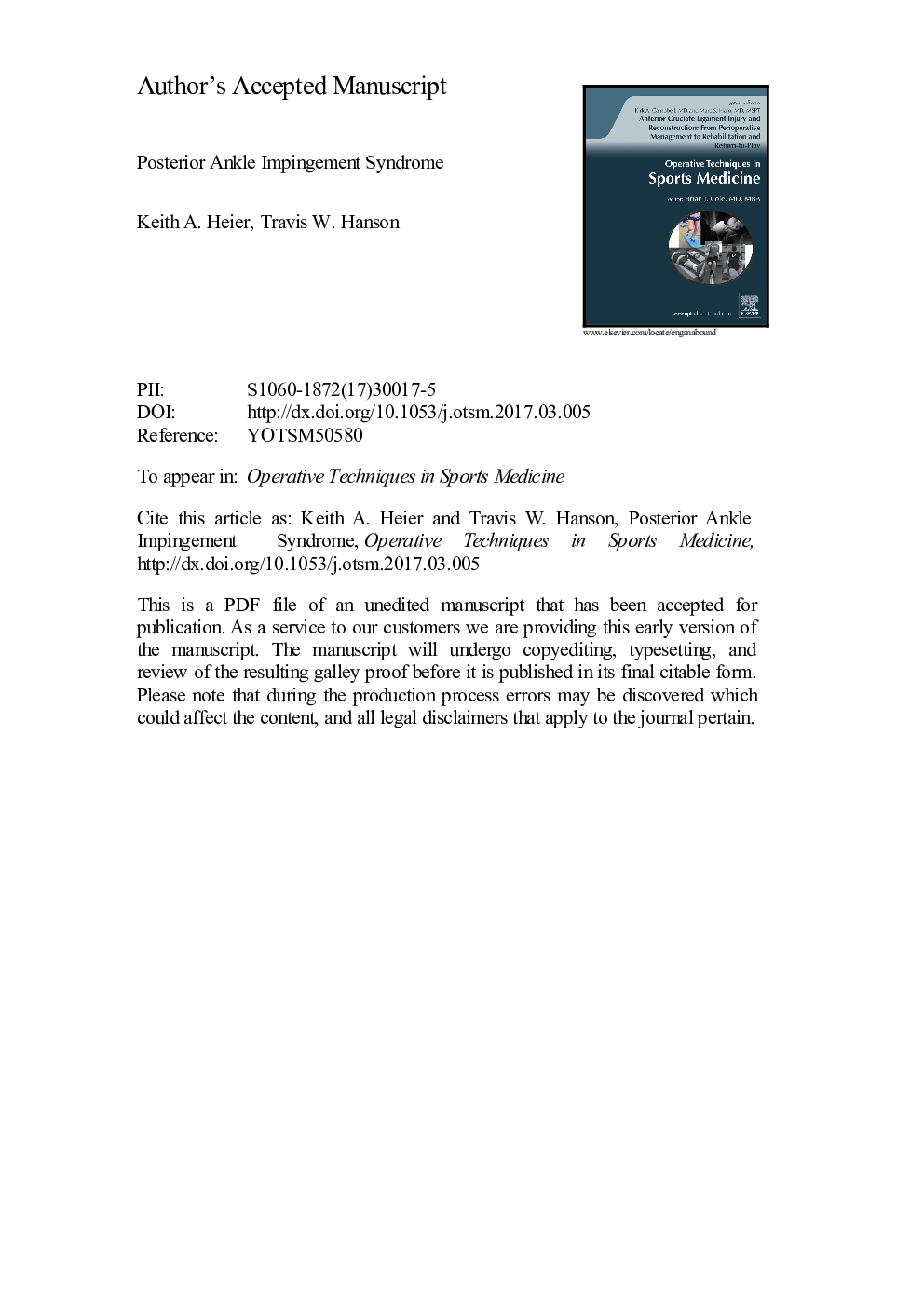| Article ID | Journal | Published Year | Pages | File Type |
|---|---|---|---|---|
| 5710949 | Operative Techniques in Sports Medicine | 2017 | 21 Pages |
Abstract
Posterior ankle impingement syndrome is commonly seen in athletes whose sport requires them to repetitively plantarflex the ankle such as in ballet dancers, soccer players, and gymnasts. This manifests as activity-related pain that is localized to the posterior ankle. It can be a debilitating condition that limits the athlete's ability to perform at the optimal level. Posterior impingement is due to either soft tissue or osseous impingement. The most common causes are synovitis, flexor hallucis longus tendinitis, and symptomatic os trigonum. Nonoperative management typically involves restriction or modification of activities, brief immobilization, injections, and oral anti-inflammatory medications. Patients dissatisfied with the outcomes of nonoperative treatment are candidates for surgical intervention. Surgical intervention traditionally has been an open debridement of the posterior ankle. This approach has been largely replaced by posterior ankle arthroscopy, now the procedure of choice for surgical management of posterior impingement. In comparison to open surgery, posterior ankle arthroscopy results in significant improvements in foot and ankle patient-reported outcome scores, an earlier return to sport, and a lower rate of complications. The most common complication is sural nerve neuropraxia.
Related Topics
Health Sciences
Medicine and Dentistry
Orthopedics, Sports Medicine and Rehabilitation
Authors
Keith A. MD, Travis W. MD,
